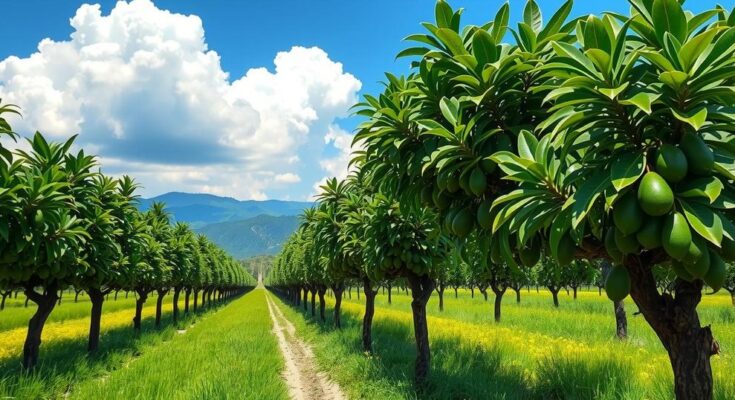The Hass Avocado Board and Cirad’s report shows a decline in new avocado plantings in Peru, forecasting a continued slowdown in growth due to lower profitability, water issues, and competition from other crops. While the overall area for avocado cultivation remains steady, investment in better management practices is necessary to enhance future productivity in the industry.
The Hass Avocado Board, in collaboration with Cirad, an agricultural research organization, has produced a mid-term projection regarding avocado production from key avocado-supplying countries to assist stakeholders in anticipating market dynamics. This ongoing project, initiated in 2019, focuses on major avocado markets, specifically those in Peru, Mexico, California, Chile, and Colombia.
Following a five-year review, trends indicate that while avocado cultivation has experienced growth with expanding orchards from 2019 to 2022, there has been a notable decline in new plantings since that time. By 2024, the estimated cultivation area is projected at 76,750 hectares, with major avocado-producing regions in Peru remaining as Olmos, Chavimochic, Lima Valleys, and Sierra.
Evidence shows that Olmos and Chavimochic are experiencing decreased planting rates due to factors such as diminished profitability, severe water scarcity, extreme weather events, and disappointing yield forecasts. In Chavimochic, challenges include high land costs, market saturation, and competition from rapidly growing sectors such as blueberries and new grape varieties, while Lima Valleys and Sierra regions are developing more gradually.
The report identifies a multitude of socioeconomic, climatic, and political influences that have impacted the Peruvian avocado market over the last five years. The decline in avocado profitability can be attributed to increased production costs, poor yields, competition from the European market, climate variability, political instability, and the allure of more profitable crops like blueberries.
Despite expectations for a slowdown in growth, the report suggests that new plantings may still be positive. To bolster productivity, it advocates for replanting efforts utilizing improved rootstocks that are more resistant to climate challenges and salinity, alongside enhanced technical management strategies to optimize output in the avocado sector.
In conclusion, the collaboration between the Hass Avocado Board and Cirad reveals a significant shift in Peruvian avocado plantings, with growth slowing considerably due to multiple challenges. While cultivation areas are expected to remain steady, proactive measures such as the adoption of improved rootstocks and better management practices are essential for future productivity and profitability. Stakeholders must adapt to changing market conditions influenced by various socio-economic and climatic factors to navigate the evolving avocado landscape.
Original Source: www.freshfruitportal.com




